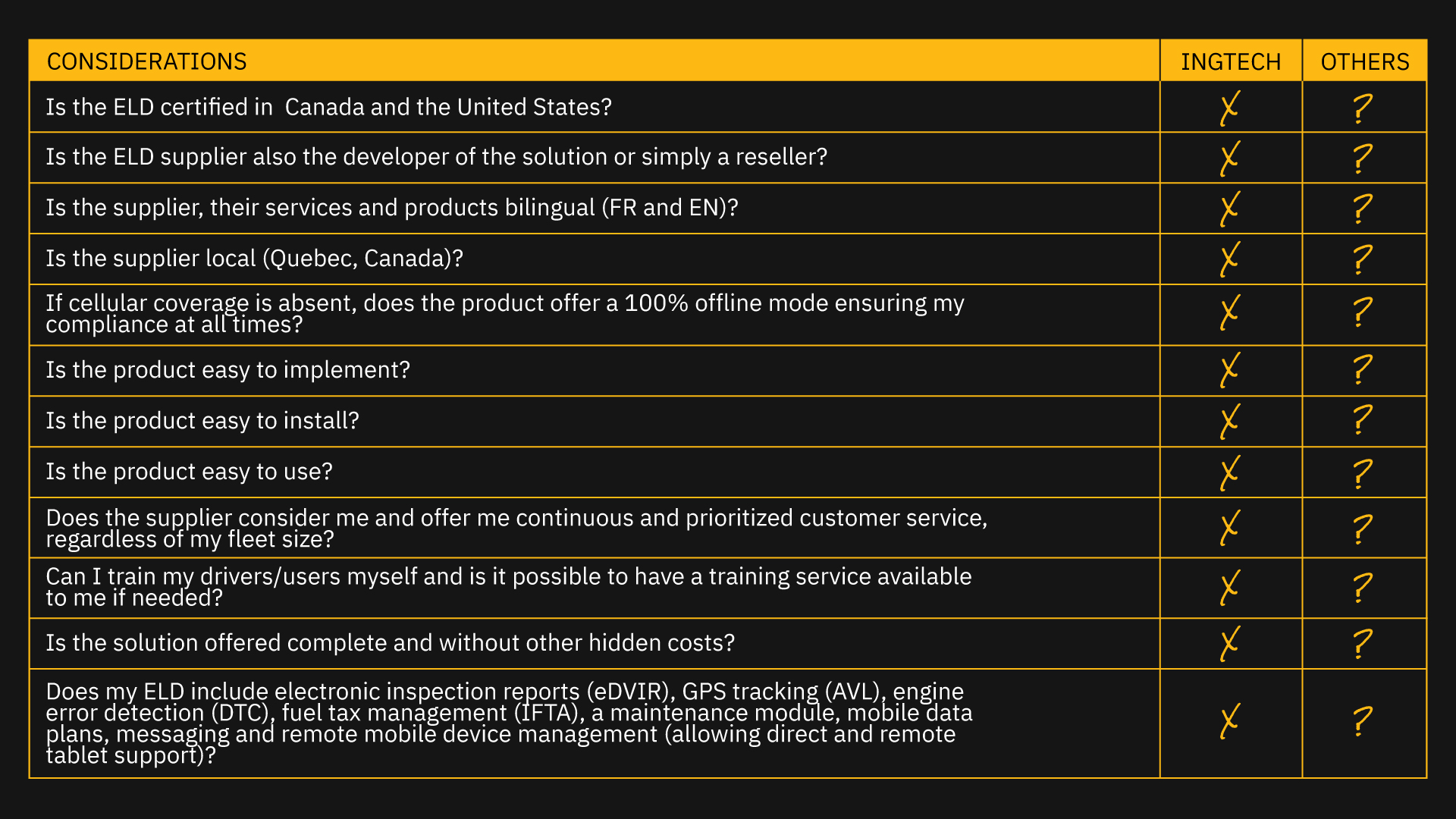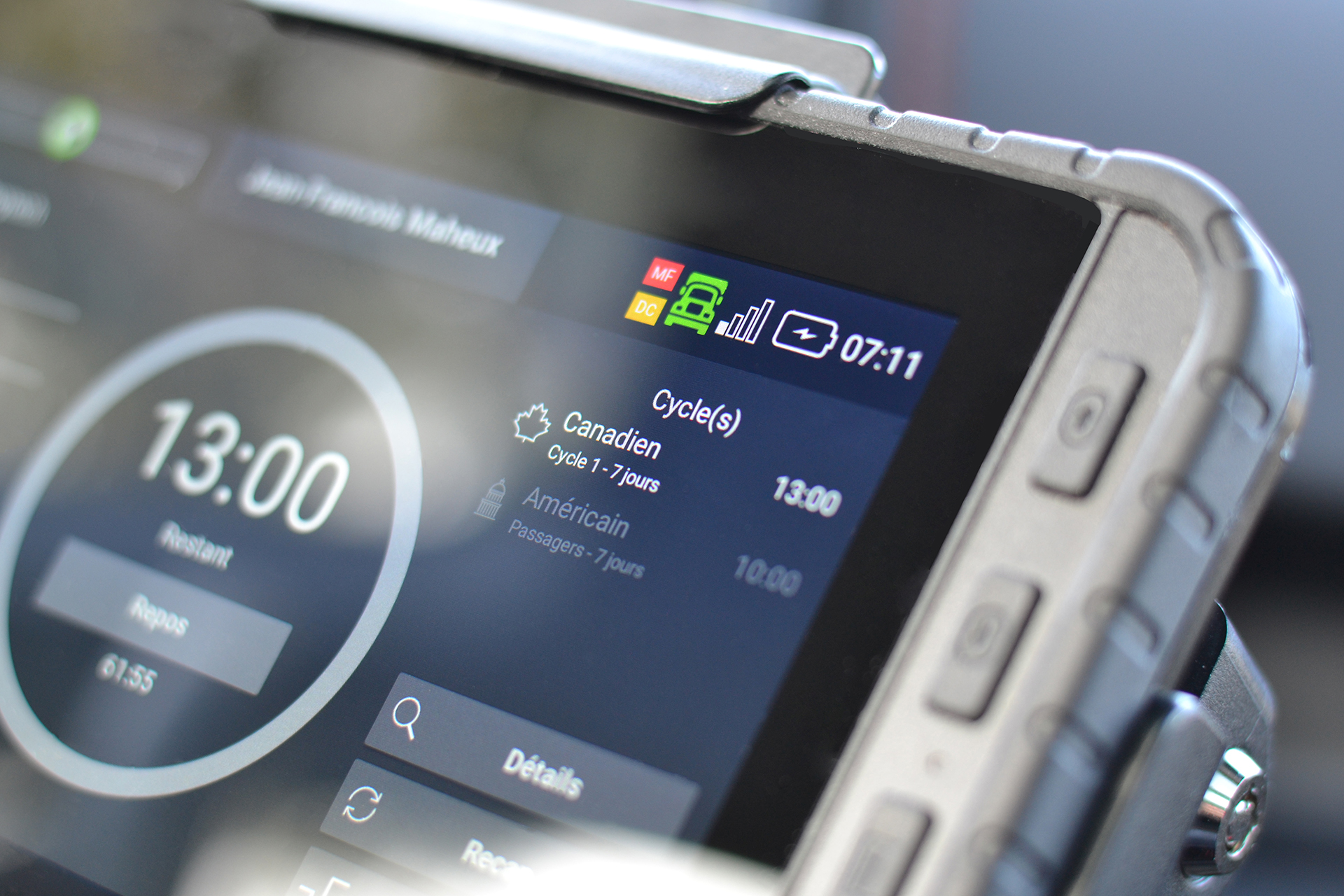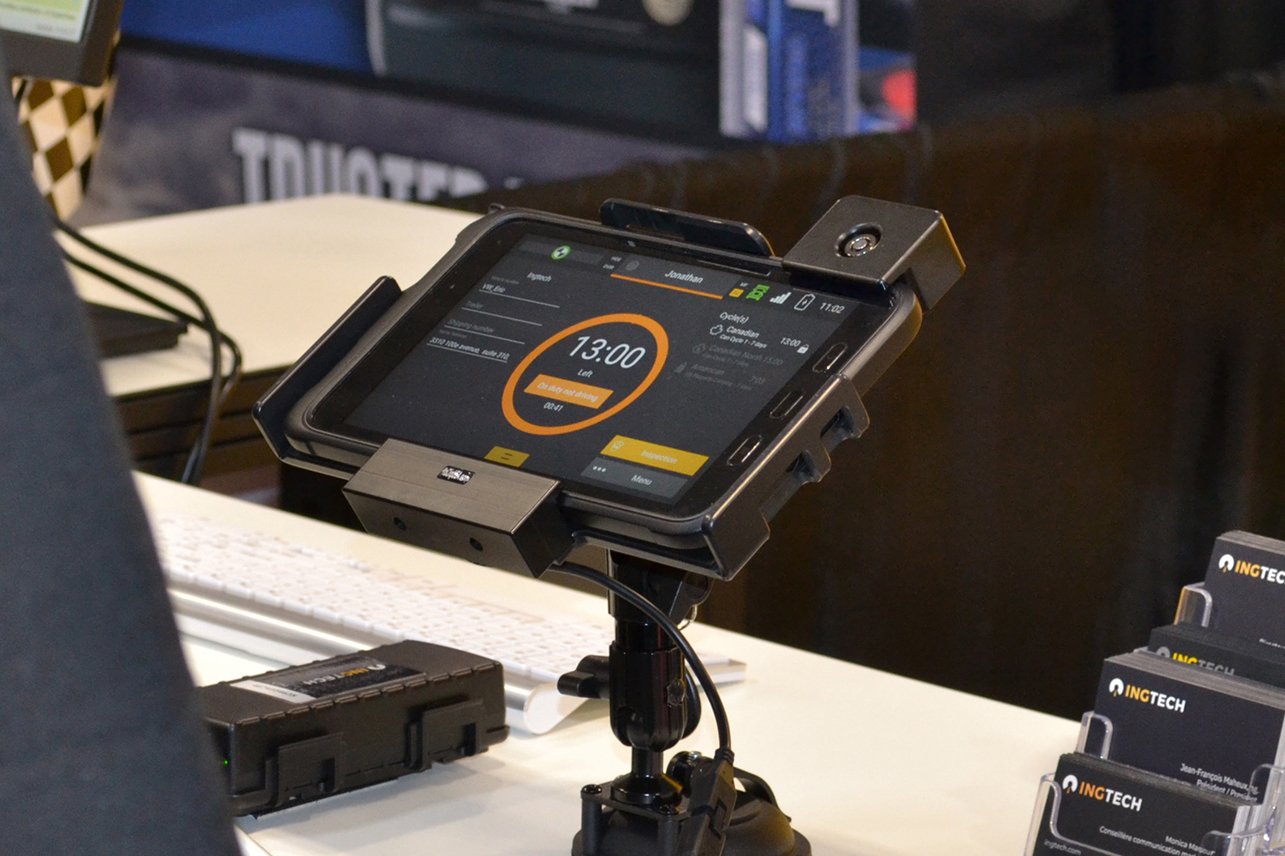- Identify and understand exemptions that may apply to your drivers and operations
- Plan and ensure the deployment of an ELD implementation schedule in the company
- Schedule training sessions frequently and on an ongoing basis (internal and external)
- Understand key ELD requirements affecting your operations
- Create or update your company’s hours of service policy
- Evaluate and select your ELD provider
- Understand the reason(s) for unassigned driving
- Understand when you should use an ELD in your fleet
- Nominate one or more ELD champion(s)
- Communicate the benefits of using an ELD to your team
- Audit the use of the ELD internally
- Justify periods of unassigned driving that have not been attributed to drivers
- Keep activity reports for a minimum period of 6 months (separate systems)
- Ensure drivers have required ELD documentation aboard their vehicles
- Provide activity reports to an inspector in the event of an audit
- Understanding the rules and sanctions related to harassement
- Understand and comply with applicable laws
- Provide and maintain all information related to driver accounts
- Ensure drivers are using the ELD and with the correct account
- Review the content of activity reports and suggest changes electronically if necessary
- Keep the required supporting documents
- Support drivers in the daily use of the ELD (level of support S1)
- Ensure that the ELD is correctly installed and deployed, in good working order and used safely
- Create and maintain a collaborative working relationship with the ELD supplier.
- Manage activity changes related to hours of service (OFF, SB, D, ON)
- Annotate an activity if necessary
- Provide the location of an activity if it was not acquired automatically
- Check or enter the following information: tractor number, trailer number, bill of lading numbers
- Claim any unassigned driving time that belongs to them
- Revise the changes suggested by the operator
- Provide activity reports to a road controller as part of an inspection
- Certify each activity report
Each country and province offers exemptions to various groups of carriers. The following hyperlinks will take you to the detailed list of each of them.
- United States : Federal Motor Carrier Safety Administration
- Canada: Transport Canada
- Ontario: Ministry of Transportation
- Quebec: Société de l'Assurance Automobile du Québec
- United States : Federal Motor Carrier Safety Administration
- Canada: Transport Canada
Here are the key ELD-related items to consider when updating your hours of service policy.
- Define roles and responsibilities
- What to do and who to contact when the driver experiences issues while using the ELD
- Define the process for submitting and storing the required supporting documents
- How management (administration) will monitor and track driver activity reports
- How to prevent dispatchers from assigning work (driving) to drivers with no available hours
- A statement prohibiting drivers from driving in violation when they are short on hours
- Disciplinary measures and corrective actions related to ELD compliance violations
- Defect reporting and resolution (MF/DC) process
Remember to communicate policy changes to your employees and make them readily available for future reference.
This role is essential. It is necessary that one or more members of your team:
- Master the rules, laws and obligations related to driver hours of service
- To master the use of the ELD solution both on the mobile application and the web portal
- Configure the ELD solution and maintain it.
- Support ELD users (administrators and drivers) as an expert
- Establish the link with the ELD supplier (act as a point of contact with your ELD supplier’s project manager)
- Coordinate installations
- Coordinate training
- Take care of the follow-up of service tickets opened with the ELD supplier
- Include the use of the ELD in the internal hours of service policy
- Provide users (current and new) with an adequate level of training.
- Mobilize and make the company (operator(s)) aware of its ELD responsibilities
Here are some examples of tasks that could be included in planning and monitoring the deployment of an ELD implementation plan
- Develop a clear action plan formalizing the next steps
- Establish a realistic deployment schedule based on your reality and your needs
- Test and validate ELDs and establish user accounts
- Coordinate installations
- Identify the desired integrations between your ELD solution and your other products
- Identify vehicles to equip
- Identify users (drivers, dispatchers, managers and others) and plan their training (internal and/or external)
Take the time to establish a list of required qualifiers by answering a few questions, here are some examples:

Voici quelques autres avantages importants associés à l’utilisation du DCE que vous devriez partager auprès de votre équipe :
- Gain de temps et d'argent en réduisant la paperasserie
- Réduction des frais administratifs
- Amélioration de l'efficacité de vos opérations
- Accès, en temps réel, à de l'information pertinente aux différents membres de votre équipe
- Minimisation des infractions de conformité
- Contribution à l’amélioration de votre dossier de sécurité (ex. PECVL)
- Prévention des accidents
Si vous vous retrouvez à:
- Répondre à de nombreuses questions de conducteurs;
- Fréquemment faire des modifications de rapports d'activités (des demandes de changements);
- Harceler les conducteurs pour qu’ils/elles certifient leurs fiches;
- Ou gérer trop de conduites non assignées.
C'est un signe qu'une formation DCE supplémentaire est nécessaire.
Mettre en place des sessions régulières et continues de formation dans le but d'assurer que les conducteurs et le personnel sont pleinement informés et à l'aise avec la technologie aideront à:
- Gagner du temps
- Réduire considérablement les erreurs de journalisation (rapports d'activités)
- Réduire drastiquement la quantité de conduites non assignées
- Garder à l'esprit les politiques et procédures des heures de conduite et de repos
- Maintenir la conformité de la flotte
La direction, les conducteurs et le personnel concernés doivent tous participer à la formation DCE. Développer un processus pour traiter les questions ou problèmes de DCE est une autre partie importante de la formation continue. C’est une question d’efficacité, de conformité et de tranquillité d’esprit.
Les exploitants sont responsables, entre autres, de s'assurer que tous les temps de conduite non assignés sont résolus.
- Soit le conducteur peut réclamer et annoter une conduite non assignée à son journal
- Soit cette conduite peut être réattribuée à un autre conducteur.
Ne pas résoudre les activités de conduite non assignée peut entraîner des violations de conformité ou causer des problèmes lors de l'inspection/audit.
Si vous avez beaucoup de conduites non assignées qui se produisent à cause des « jockeys » ou des mécaniciens qui déplacent les véhicules, prenez le temps de réfléchir à la façon dont vous pouvez réduire ces occurrences. Il est possible d’avoir une tablette partagée à la disposition des conducteurs de triage afin qu'ils puissent se connecter au véhicule et effectuer le déplacement. Une fois le déplacement effectué, ils pourront se déconnecter.
Avec INGtech, vous pouvez facilement isoler les activités « de cours » et les annoter/justifier en lot.
L'audit ce n'est pas une perspective passionnante, mais c'est essentiel. La planification d'audits internes peut aider à vérifier si les conducteurs remplissent correctement leurs fiches et si le personnel suit les processus prescrits. Votre entreprise doit mettre en œuvre un processus efficace de surveillance, de suivi et d'évaluation de la conformité de tous les conducteurs aux réglementations d’heures de conduite et de repos en vigueur et aux politiques de l'entreprise. Il est de la responsabilité de l’exploitant d'examiner rapidement tous les registres du statut de service pour les infractions des heures de service (heures de conduite et de repos). Envisagez d'augmenter la fréquence de vos audits pendant cette importante période de déploiement.
Plan d'action pour les auditeurs :
- Examiner la conformité des heures de conduite et de repos du conducteur selon son cycle en vigueur;
- Examiner les rapports de ronde de sécurité (eRDS);
- S’assurer que les conducteurs vérifient et certifient (signent) leurs rapports d'activités quotidiennement;
- Identifier les trajets qui ont été effectués sans conducteur assigné, trouver le conducteur qui a effectué le trajet et affecter ce conducteur au trajet.






